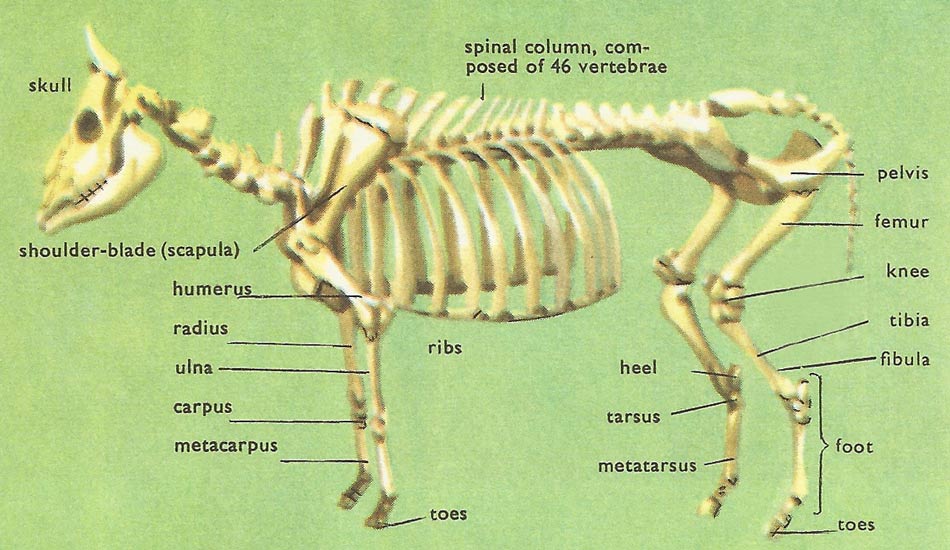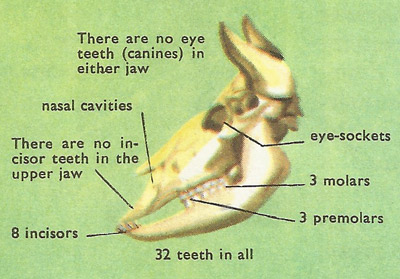anatomy of the cow

Skeleton of a domestic cow.

Domestic cow.

Like that of all ruminants the dentition of the cow (i.e. the arrangement of the teeth) is incomplete. Although there are eight sloping incisors in the lower jaw, there are no corresponding teeth above. Because of this, the cow cannot bite off grass with her teeth but tears it off by seizing it between the incisor teeth and the hardened gums of the upper jaw.

he horns of the cow are hollow. At their bases they fit over processes of spongy bone that protrude from the skull.

The cow's foot has only two functional toes, the much-enlarged nails of which comprise the hoof. As a result of its dual origin the hoof of the cow is in two parts and is said to be cloven. The 'shin' is formed by two metatarsals which are united to form one single bone.

Cow musculature, digestive system, respiratory system and circulatory system.

Cow's stomach.
The milking-cow, bred for her high milk production, has a fine skin, light bones, a long body, a small head, moderate musculature and a very large mammary gland with four teats.
Stomach
An important characteristic of the cow is her complex digestive system, which is specially adapted for the digestion of the large amounts of grass which she eats. This process is known as rumination. The diagram shows the way in which the food passes into the rumen, circulates to the reticulum, and is later regurgitated into the mouth for further chewing. When swallowed a second time some of the food returns to the rumen while the remainder passes through the omasum into the abomasums and thence into the small intestine.
Some facts about the cow
| Average weight of new-born calf | 75-100 lb. |
| Period of growth | 4-5 years |
| Length of life | 18-22 years |
| Body temperature | 101-102 F |
| Respiration rate per minute | 15-20 |
| Number of ruminations per hour | 55-60 |
| Approximate weight of brain | 14 oz. |
The cow has keen senses of smell and hearing, but is unable to see very well.


